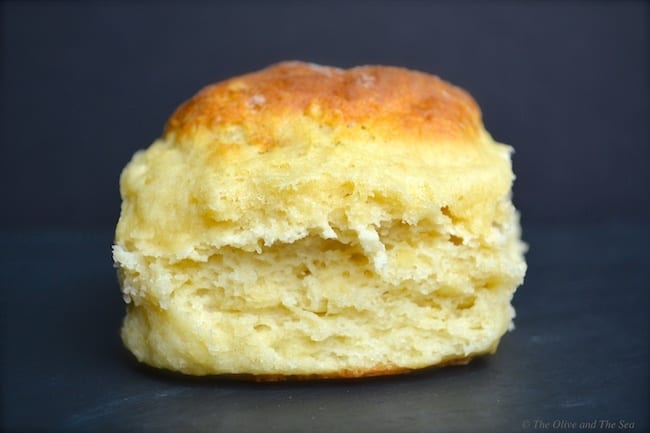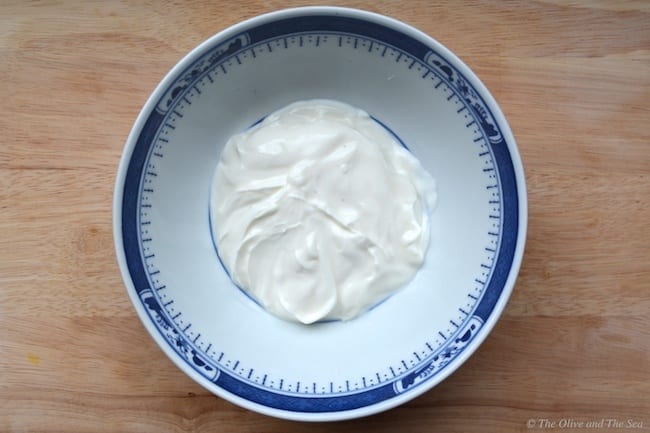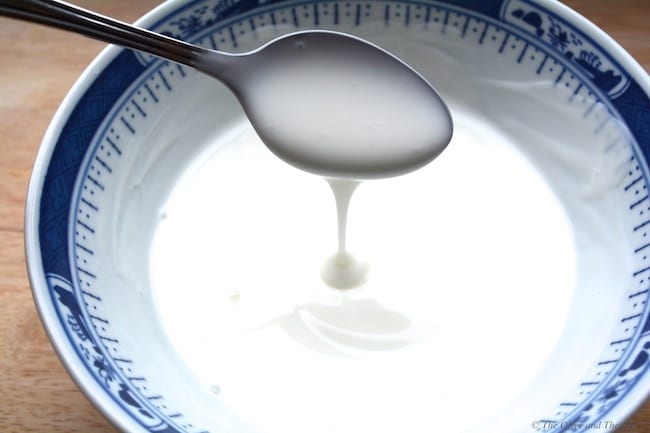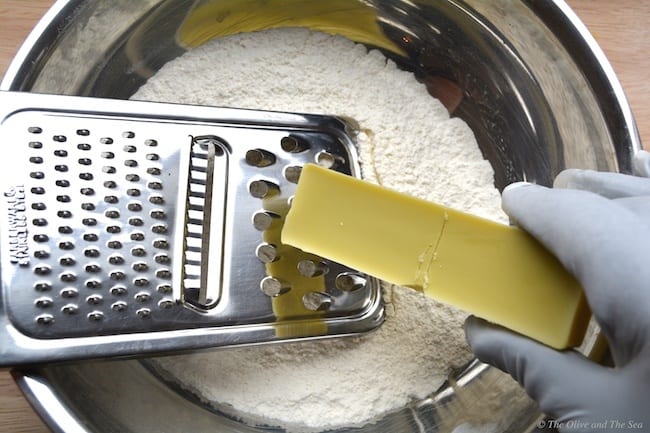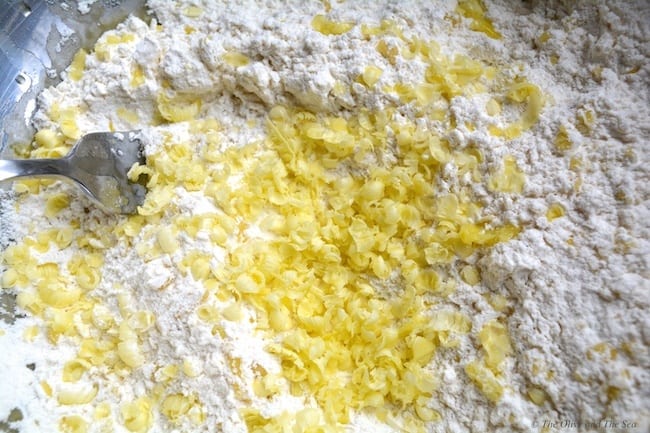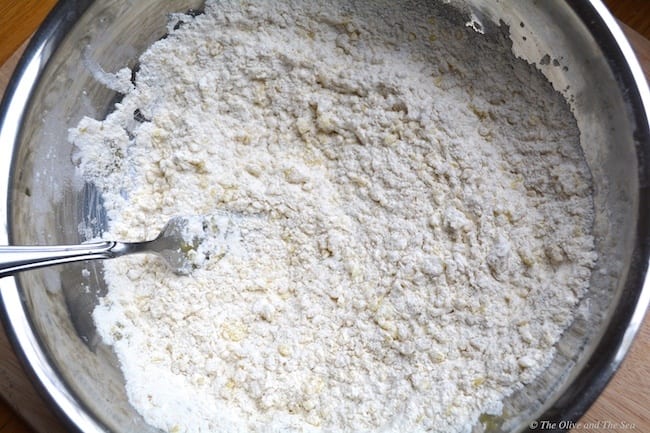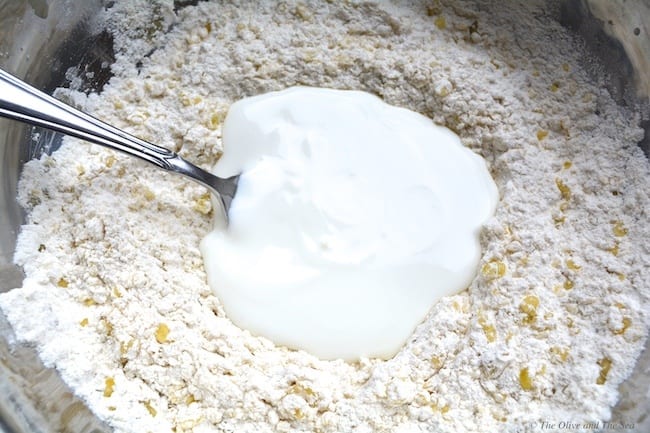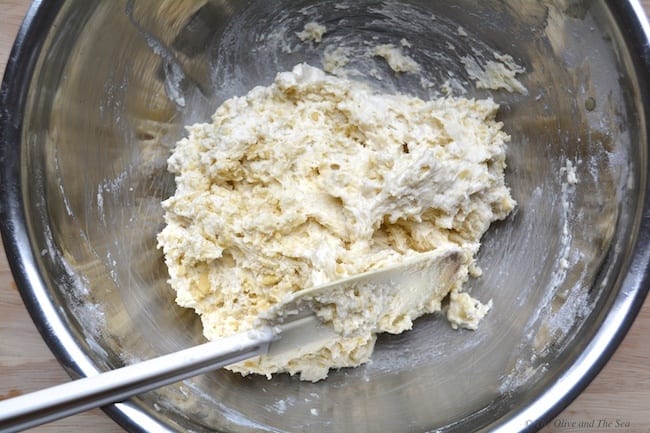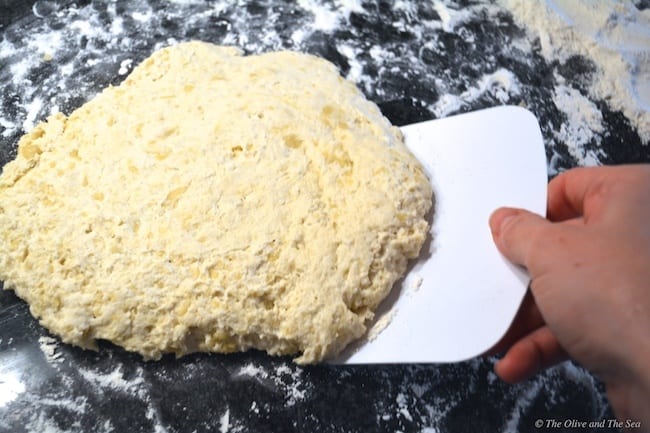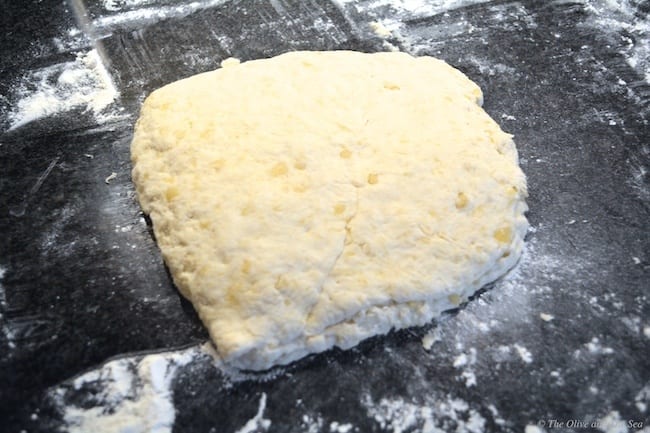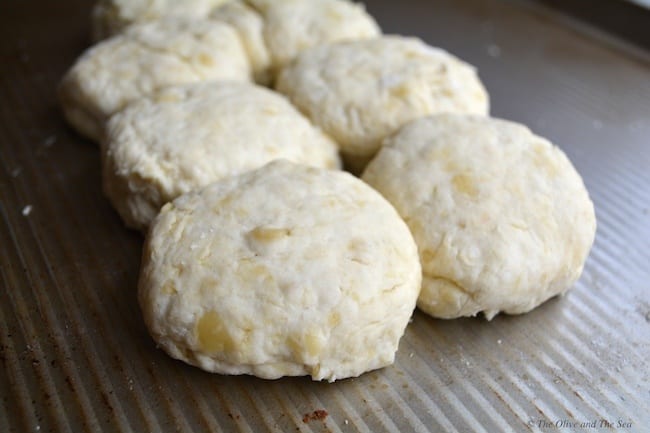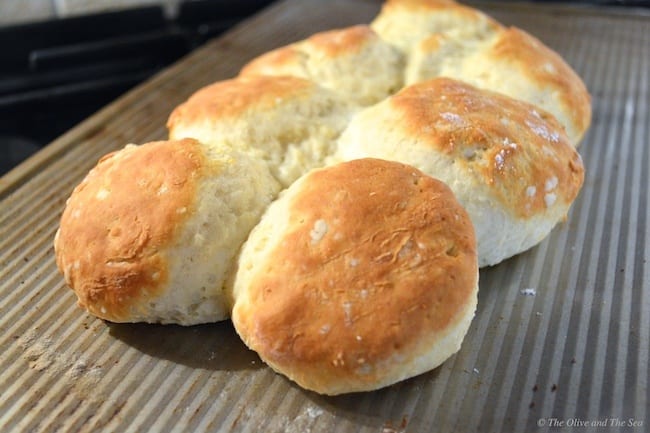Biscuits are the mascot of Southern cuisine and one of my cherished childhood memories. Every Sunday, my father would rise before the rest of us, and prepare a fresh batch. Staying true to my mother’s Appalachian upbringing, he always used buttermilk and shortening. After spending 15 years in the Northeast, I had forgotten about biscuits, until relocating to North Carolina a few years ago. By then, I had become weary of shortening, and developed a deep appreciation for extra virgin olive oil. Not only did I value its health benefits, I was also learning from my Greek mother-in-law how to use it beyond a simple salad dressing or marinade. Cinnamon and almond shortbread cookies, muffins, baklava, pastry dough – eventually, olive oil was in all my cooking. That’s when I began to wonder: would it be possible to achieve a respectable Southern biscuit with olive oil?
A key biscuit characteristic is its light fluffy, sometimes flaky, interior. To achieve this consistency, the fat used must have a solid form such as cold lard, shortening, or butter. As a result, oil is not considered appropriate. However, most do not realize, that pure extra virgin olive oil hardens when frozen. In fact, the refrigerator trick is sometimes viewed as a good test to assess whether an olive oil has been diluted with other seed oils. If unadulterated, it should thicken, become opaque, and eventually harden after several hours in the freezer.
After testing various recipes, I concluded that hardened olive oil similar to frozen butter was easiest to work with. As it cools, the oil develops a texture comparable to lard and shortening. However, it is easier to work with when fully hardened.
When trying this recipe, there are a few important considerations to keep in mind:
- Practice makes perfect. Biscuits require a certain degree of experience and may involve a few failures before success. A good example of this is the story of critically acclaimed Chef Vivian Howard and her first attempt at making buttermilk biscuits. If your first batch doesn’t work out, don’t give up. Many experts share tips and tricks such as Kathleen Purvis and her biscuit recipe in The Charlotte Observer. There are even entire books dedicated to the subject. Biscuits by Belinda Ellis is my favorite.
- Be sure to use soft wheat self-rising flower. The type of flour you use is key. Anything other than soft wheat and your biscuits will be too hard. Substituting self-rising with baking powder and baking soda won’t yield the same flavor.
- Buttermilk vs Greek Yogurt. A truly “Greekified” version of a southern biscuit, calls for watered down Greek yogurt instead of buttermilk. I’ve included both for purposes of this recipe. Although, I must admit that my own Appalachian heritage makes me partial to buttermilk.
- The right tools will make life easier. There are several tools that come in particularly handy when preparing olive oil biscuits: a rectangular butter mold or other receptacle to freeze the olive oil into a shape that is easy to grate, a wool and latex glove to prevent your warm hand from melting the oil when grating, a biscuit cutter, and a bench knife dough scraper.
Ingredients
- 2 cups soft wheat self-rising flour
- 1/4 cup all-purpose flour
- 5 tablespoons frozen extra virgin olive oil
- 1/2 cup Greek yogurt
- 1/4 cup water*
* The ratio of dry to wet ingredients will vary depending on the brand of flour and buttermilk/yogurt used. You may need to increase or decrease the liquid slightly in order to achieve the desired consistency.
Preparation
- Preheat the oven to 450 degrees
- Have all of your ingredients measured so that you can work quickly
- Combine the yogurt with water to thin
- Place the flour in a chilled bowl
- Cover the hand that will be holding the frozen olive oil stick with wool and latex gloves (the wool to create a heat barrier and the latex to protect the wool from the oil)
- TIP: You may want to freeze more than the 5 tablespoons of olive oil required for the recipe so that you can maintain a firm grip on the frozen bar while grating. In the picture below, a line is drawn at the 5 tablespoon mark
- Once grated, stir the olive oil into the flour with a fork
- Make a well in the center of the flour and add the buttermilk or thinned yogurt
- Using a spatula, combine the flour with the buttermilk/yogurt, working the dough as little as possible
- Pour the dough onto a surface dusted with all-purpose flour
- With floured hands, gently pat the dough to flatten to about 1/2 inch thick
- Using the dough scraper, fold the dough in half from right to left, and once again, pat the dough with floured hands to flatten
- Fold the dough a second time, shifting the direction from bottom to top, and a third time from left to right, each time gently patting the dough with floured hands
- After the last fold, pat the dough to about 1 inch thick
- Cut the biscuits as close together as possible
- Flour the biscuit cutter and press straight down (don’t twist) into the dough, cutting the biscuits as close together as possible
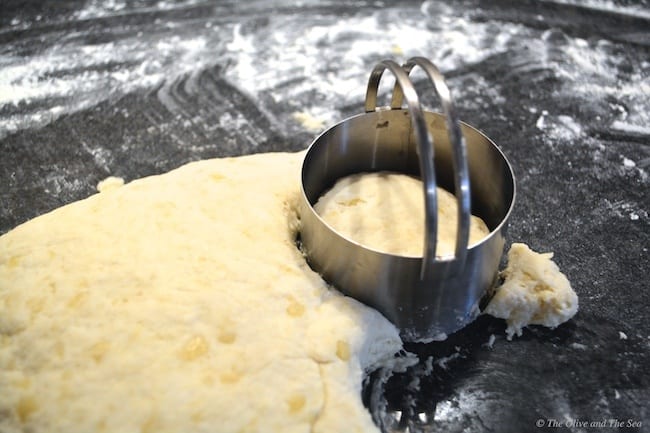
- Place the biscuits close together on the baking pan for softer sides or apart for crunchier sides
- Bake in the oven at 450 degrees for approximately 13 minutes. The specific ingredients and oven will cause the baking time to vary slightly, so begin monitoring your biscuits around 11 minutes
- They are ready when the tops are golden brown
- As I take a bite, I can’t help but wonder: what would Great-Mamaw think of these?

